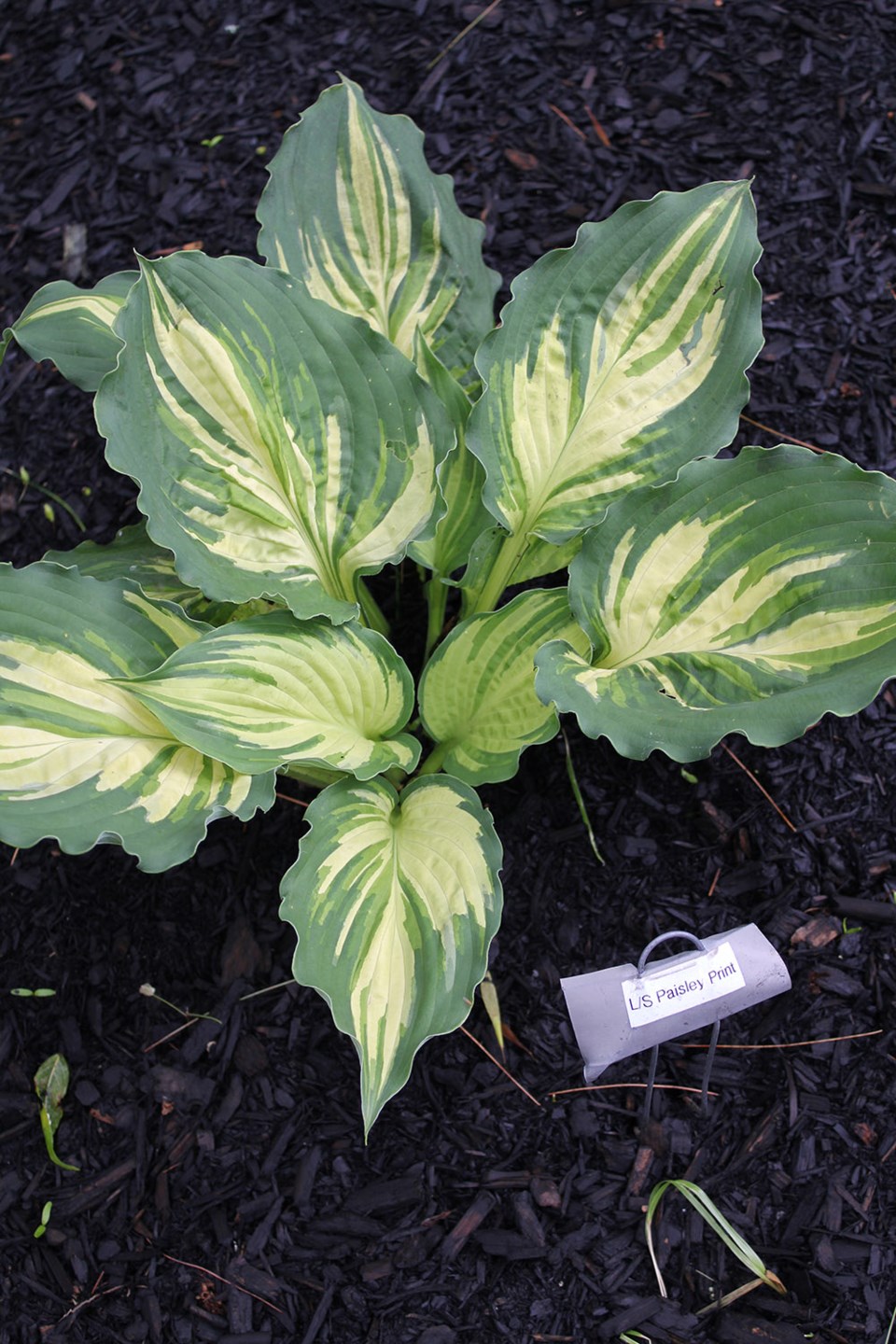There are thousands of hosta cultivars: from dwarfs of only a few inches in height and spread to giants that can be a few feet tall and wide (even taller when in flower). Some have green, blue, yellow or variegated (yellow, cream, or white with green or multiple shades of green) leaves. Leaves vary from heart-shaped to long, narrow and strap-like. They vary in their hardiness and shade tolerances – from nearly full sun to dappled shade. They come with or without noticeable fragrance and in a range of prices. With so much choice, how do you decide which hostas to grow in your garden?
The American Hosta Growers Association (www.hostagrowers.org) can help. Since 1996, they have showcased a Hosta of the Year that is dependable, widely available and moderately priced. 2019’s hosta is ‘Lakeside Paisley Print.’
Introduced in 2011 by Mary Chastain, ‘Lakeside Paisley Print’ is a medium-sized hosta, reaching 10 inches high with a 20-inch spread. Slightly puckered, variegated, heart-shaped leaves have moderately green wavy margins. The variegation appears painted on, with a central yellow stripe with lighter green and yellow streaks feathering out from the leaf base. Cream flower stalks loaded with light lavender flowers can reach 24 inches high in mid-summer. Hardy to USDA zone 3, it tolerates part-sun to shade.
Other recent winners include ‘World Cup’ (2018), ‘Brother Stephan’ (2017), ‘Curly Fries’ (2016), ‘Victory’ (2015) and ‘Abiqua Drinking Gourd’ (2014). One of the past winners that features prominently in my front yard is ‘Patriot’ (1997), a medium-sized hosta with white-edged leaves and dark green centres. One of its outstanding features is its excellent sun tolerance.
General hosta care: Unless you know otherwise, assume hostas are sun-shy and should be planted where they will be in shade at least during mid-day. A rule of thumb is that the greener the leaf, the more shade they can tolerate; conversely, the yellower the leaf, the more light they require for adequate photosynthesis.
Hostas are water lovers and receive up to 60 inches of precipitation in their native habitat, double what can be expected here on the Prairies. Hostas in full sun, those competing with shallow-rooted shrubs or other perennials, or under a dense tree canopy will need extra water to thrive. When planting, amend the soil well with peatmoss or compost to maintain adequate soil moisture. And after planting, cover the soil with four inches of organic mulch (e.g. bark, wood chips, compost, or coarse peat). This will help to conserve moisture, control weeds, keep the soil cool during the heat of summer, and protect the root zone from extreme winter lows.
Hostas can be moved and divided during most of the growing season until early August (4-6 weeks before frost). The best time is in early spring just as their leaves start to push out of the ground, when the rolled up, purplish pointy leaf buds are only about an inch or so long. The next best time is after the young leaves have ‘toughened up’ in mid-summer when they are less prone to damage. The later you wait, they more water they’ll require to become re-established. Dig at least four inches beyond the edge of the clump to get as much of the roots as possible. Gently shake off excess soil and even wash the soil off with a hose. Start by dividing the clump in half. You may be able to tease it apart by hand with the help of a sharp shovel or serrated knife (I use a Japanese hori kori knife). Depending on the size of the root ball, you may be able to get four or more new clumps. Keep your new clumps out of the sun and protect the roots from drying out (cover them with moist peat) until back in the ground. Ideally, you should replant on the same day.
Erl gardens in Saskatoon and tweets about it on occasion @ErlSv.
This column is provided courtesy of the Saskatchewan Perennial Society (SPS; saskperennial@hotmail.com ). Check our website (www.saskperennial.ca) or Facebook page (www.facebook.com/saskperennial) for a list of upcoming gardening events.



